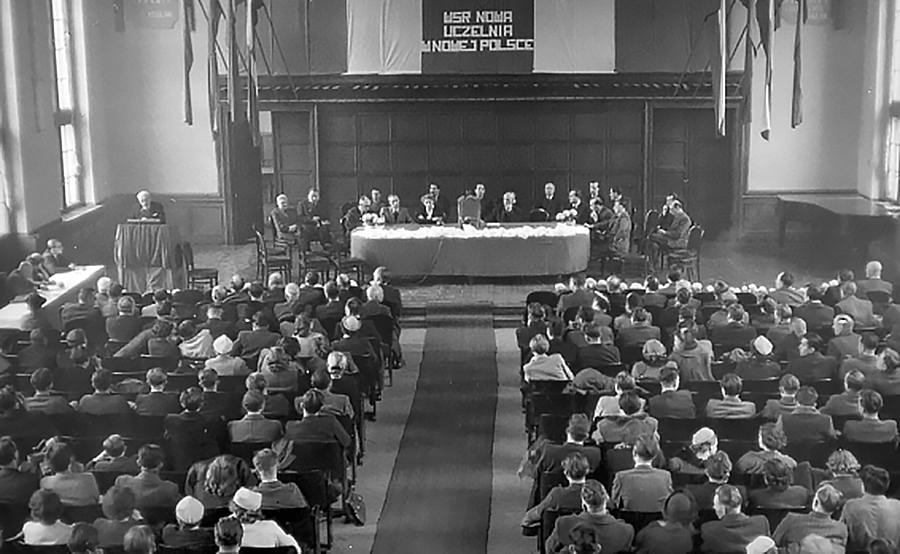Our history
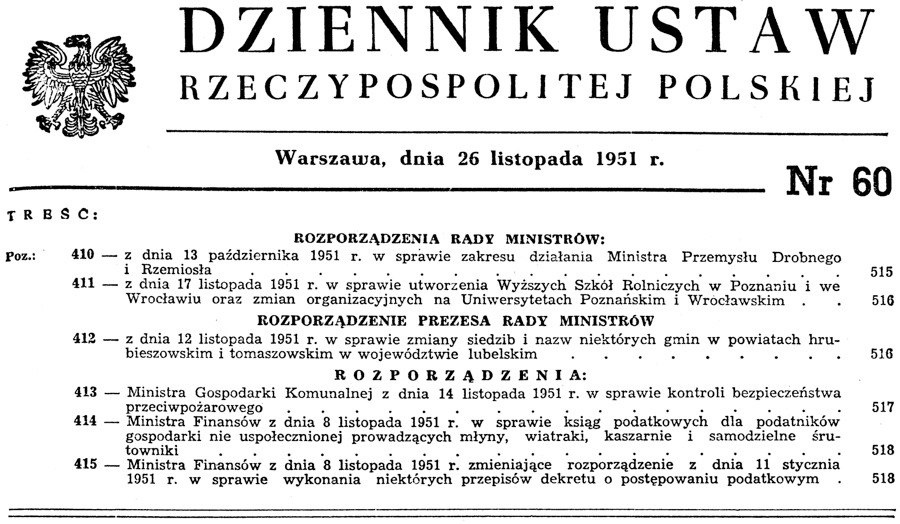 The University of Agriculture (WSR) was founded 70 years ago, in 1951. The Council of Ministers passed a relevant resolution on 17 November, separating four faculties from the University of Wrocław and the Wrocław University of Technology: Agriculture, Veterinary Medicine, Water Melioration and Zootechnics. In 1952 the helm of the newly established WSR was taken by Prof. Stanisław Tołpa, an outstanding botanist, researcher of peat bogs, student trained by the former Chancellor of the Jan Kazimierz University in Lviv and the first Chancellor of the combined University and University of Technology in Wrocław, Prof. Jan Kulczyński.
The University of Agriculture (WSR) was founded 70 years ago, in 1951. The Council of Ministers passed a relevant resolution on 17 November, separating four faculties from the University of Wrocław and the Wrocław University of Technology: Agriculture, Veterinary Medicine, Water Melioration and Zootechnics. In 1952 the helm of the newly established WSR was taken by Prof. Stanisław Tołpa, an outstanding botanist, researcher of peat bogs, student trained by the former Chancellor of the Jan Kazimierz University in Lviv and the first Chancellor of the combined University and University of Technology in Wrocław, Prof. Jan Kulczyński.
The history of the University of Agriculture, which in 1972 became the Academy of Agriculture and in 2006 the Wrocław University of Environmental and Life Sciences, dates back to much earlier times and is connected to the history of the University in Lviv, i.e. Galicia, which was under Austrian rule at a time when Poland was deprived of its statehood, yet already independent, in the short two decades between the two world wars. But its history also combines the heritage of German Breslau, which became Polish Wrocław in 1945, which attracted scientists from the former Polish borderlands, saved from the war.
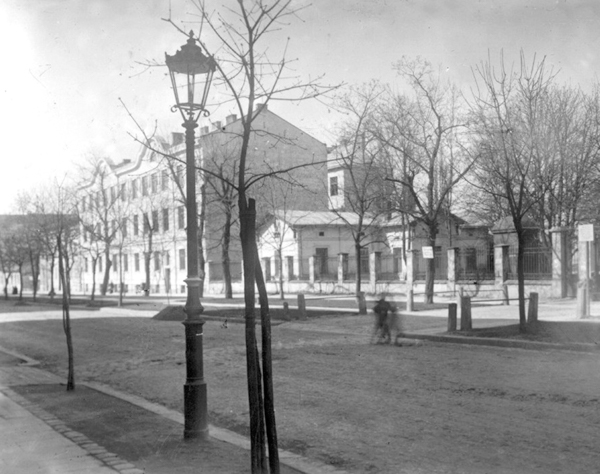 In 1856 the Farming School was founded in Dublany near Lviv, which was transformed in 1858 into the University of Agriculture, and in 1901 - on the initiative of the Galician Sejm, by a decision of the Minister of Agriculture - into the Academy of Agriculture, which in 1919, together with the University of Forestry, was included into the Lviv University of Technology as the Faculty of Agriculture and Forestry, following a decision of the Council of Ministers. A younger, veterinary university was founded on Polish grounds in 1881 in Lviv, it was third after Vilnius and Warsaw. The university was established through the efforts of the Galician Sejm as the Imperial Royal Veterinary School, which in 1922, in an already independent Poland, in recognition of its scientific level, was transformed into the Academy of Veterinary Medicine.
In 1856 the Farming School was founded in Dublany near Lviv, which was transformed in 1858 into the University of Agriculture, and in 1901 - on the initiative of the Galician Sejm, by a decision of the Minister of Agriculture - into the Academy of Agriculture, which in 1919, together with the University of Forestry, was included into the Lviv University of Technology as the Faculty of Agriculture and Forestry, following a decision of the Council of Ministers. A younger, veterinary university was founded on Polish grounds in 1881 in Lviv, it was third after Vilnius and Warsaw. The university was established through the efforts of the Galician Sejm as the Imperial Royal Veterinary School, which in 1922, in an already independent Poland, in recognition of its scientific level, was transformed into the Academy of Veterinary Medicine.
These two universities represent the Lviv heritage of Wrocław University of Environmental and Life Sciences, which Polish scientists brought with them to Lower Silesia. Its German roots, linked to the city's pre-war history, date back to 1881, when the Institute of Agriculture was established at the Royal University of Wrocław, which was initially located at 5 Mattiasplatz, and then between 1923 and 1945 in a new building on Hansastrasse, now Cypriana Kamila Norwida Street. The entire agricultural research base, which later became the material base of the university, was moved there.
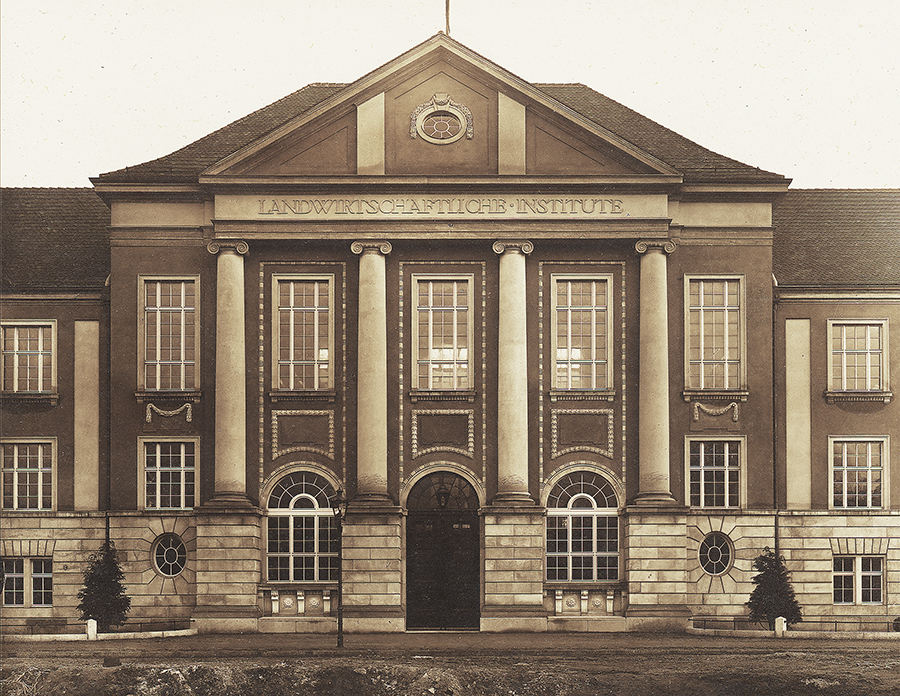
The Polish history of the university began before the end of the Second World War, in Kraków, during the spring of 1945. It was then that a government plenipotentiary, Dr Bolesław Drobner, started preparing to go to Wrocław with volunteers. He was joined by Prof. Stanisław Kulczyński - as a plenipotentiary of the Minister of Education, he created the Cultural and Scientific Group. By the end of April 1945, Drobner had gathered 140 people, 26 of whom had been convinced to go by Kulczyński. They reached the city three days after the capitulation of Festung Breslau. Kulczyński's student, Stanisław Tołpa, came to Wrocław in June in a very peculiar way. He came on a camel bought from Russian soldiers for a canister of spirits.
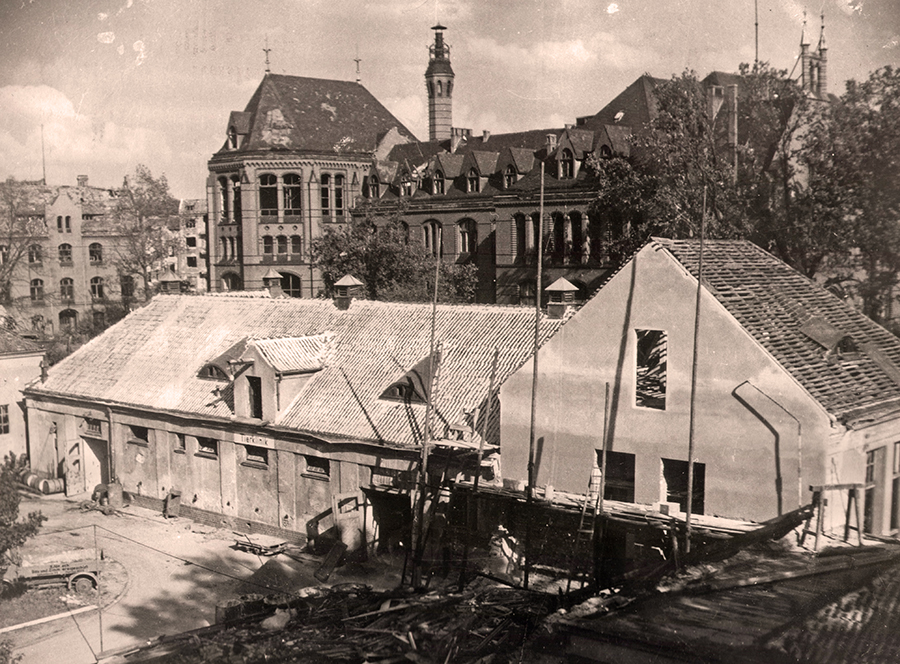 The decree establishing Polish universities in Wrocław - the University of Wrocław and the University of Technology - is dated back to 24 August 1945. According to the decree – "the Chancellors of the University of Wrocław and Wrocław University of Technology have the powers of the academic senate and faculty councils"and were given time until 31 August 1946 - it was assumed that this was enough time needed for all the work to organise the university - "rectors of the University of Wrocław and Wrocław University of Science and Technology have the competences of the academic senate and faculty councils".
The decree establishing Polish universities in Wrocław - the University of Wrocław and the University of Technology - is dated back to 24 August 1945. According to the decree – "the Chancellors of the University of Wrocław and Wrocław University of Technology have the powers of the academic senate and faculty councils"and were given time until 31 August 1946 - it was assumed that this was enough time needed for all the work to organise the university - "rectors of the University of Wrocław and Wrocław University of Science and Technology have the competences of the academic senate and faculty councils".
In the "Pionier. Dziennik Dolno-Śląski" paper of 31 August 1945, an article titled "Najbogatszy Uniwersytet Polski we Wrocławiu" (“Richest Polish University in Wrocław”) stated:
"The passing of the decree (...) was met with lively public appreciation. The whole science world has been waiting longingly for this moment. Despite the great destruction of the city, most of the university buildings in Wrocław survived. There are about 80 of them. They hold treasures invaluable to science: libraries, laboratories, clinics with first-class facilities. We currently do not have such a richly equipped university in the whole of Poland. No wonder that whole pilgrimages of students came to Wrocław to enrol at the University or University of Technology (...). The doors of Poland's richest university are open to the masses thirsty for knowledge. It is not only young people who are keenly interested in the Wrocław academy, but also a whole range of our professors, assistants and lecturers who will find suitable facilities here"
(original text)
 In the autumn of 1945, a single university - the University and the University of Technology of Wrocław - was launched, with one Chancellor, Senate and administration. Six university faculties were established: law and administration, humanities, mathematics and natural sciences, medicine with a pharmaceutical department, veterinary medicine and agriculture with a horticultural department, and four polytechnic faculties: chemical, mechanical and electrical engineering with departments: mechanical and electrical engineering, construction with departments: civil engineering and architecture, and metallurgy and mining. The first Chancellor was Prof. Stanisław Kulczyński. For a year, as Vice-Chancellor of the University, he was supported by Prof. Stanisław Loria, and for two years, as Vice-Chancellor of the Polytechnic, Prof. Edward Sucharda.
In the autumn of 1945, a single university - the University and the University of Technology of Wrocław - was launched, with one Chancellor, Senate and administration. Six university faculties were established: law and administration, humanities, mathematics and natural sciences, medicine with a pharmaceutical department, veterinary medicine and agriculture with a horticultural department, and four polytechnic faculties: chemical, mechanical and electrical engineering with departments: mechanical and electrical engineering, construction with departments: civil engineering and architecture, and metallurgy and mining. The first Chancellor was Prof. Stanisław Kulczyński. For a year, as Vice-Chancellor of the University, he was supported by Prof. Stanisław Loria, and for two years, as Vice-Chancellor of the Polytechnic, Prof. Edward Sucharda.
The first academic lecture for students was given by Prof. Ludwik Hirszfeld - on September 6, in a room without glass in the windows at the Faculty of Medicine. The eminent Polish scientist spoke to eager young people about the latest research directions in bacteriology. The official start of the first post-war academic year, however, was a lecture that began on 15 November at 9.30 am in room 305 of the University of Technology. Professor Kazimierz Idaszewski delivered it in front of the students of the 4th Electrical Department of the Faculty of Mechanical and Electrical Engineering. The date was chosen for a reason by university authorities - the lecture took place on the anniversary of the inauguration of the Imperial and Royal Polytechnic School in Wrocław, whose successor in 1945 became the Lviv University of Technology.
Six years later, on 17 November 1951, the Council of Ministers passed a resolution separating four faculties from Wrocław University and the Wrocław University of Technology: agriculture, veterinary medicine, water melioration and zootechnics. This is how the university was founded, which in 1972 became the Academy of Agriculture, and in 2006 the Wrocław University of Environmental and Life Sciences, one of the best in Poland with this profile.
